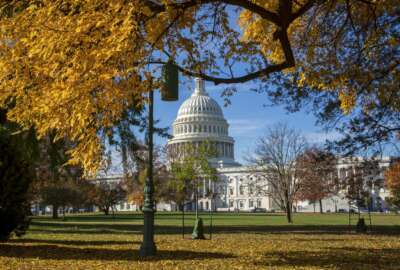As often happens in the workplace, the good news and the bad news can be the same thing. This can be true for retirees, too.
For example, after going weeks without pay during the not-so-great government shutdown, some 800,000 feds, many of whom were forced to work while others forced to stay home for 35 days, have finally gotten or will be getting their retroactive pay. That’s the good news.
The bad news, however, is that because of deductions that disappeared because of the Tax Cuts and Jobs Act of 2017, many of the lump sum payments workers have gotten are much less than they anticipated. Many people who normally get tax refunds from the federal government are learning they will be smaller this year, or in some cases they could wind up owing the government.
For federal workers the good news is that Congress approved a 1.9 percent raise for them despite the fact that the president wanted to freeze pay in 2019. Once locality pay is factored in, the raises will range from 1.5 percent to as much as 2.2 percent in some high-wage areas such as San Francisco, Washington, D.C.; New York City, Los Angeles and Houston.
That’s good news if you are in a locality pay zone, not so good news if you are in the RUS (rest of the United States). More on that can be found in Tuesday’s column.
Percentage-wise the 2019 pay raises for federal workers will be smaller than the 2.8 percent cost of living adjustment for retirees under the Civil Service Retirement System and Social Security. And it is the biggest COLA in 7 years. That’s the good news for them. But for retirees under the Federal Employees Retirement System, which also covers the majority of still-working feds, their diet COLA formula means they will only get 2 percent. That doesn’t seem like much of a loss but it could be a sign that inflation is on the rise and that future COLAs for FERS retirees will fall further and further behind.
The diet COLA formula means that anytime the COLA — based on the actual inflation rate — goes up between 2 percent and 3 percent for CSRS retirees those under the newer FERS plan will be limited to an inflation catch up of only 2 percent, like this year. If the COLA is above 3 percent, FERS retirees will get the equivalent of the CSRS COLA minus 1.0 percent.
So while a higher COLA is better because it helps retirees keep up with inflation, the fact that it is higher means FERS retirees will fall further behind, meaning their costs will rise but their income won’t each year.
Nearly Useless Factoid
By Amelia Brust
Although it’s now synonymous with Japan, sushi is thought to originate from Southeast Asia in the second century A.D. People needed a way to keep fish fresh without refrigeration, so cured meat would be wrapped in rice and fermented. Months later the rice would be discarded and the fish eaten. Eventually the idea spread to China and Japan where it evolved into the edo sushi style of raw fish and vinegar-treated rice popular today.
Source: University of Florida
Copyright
© 2024 Federal News Network. All rights reserved. This website is not intended for users located within the European Economic Area.
